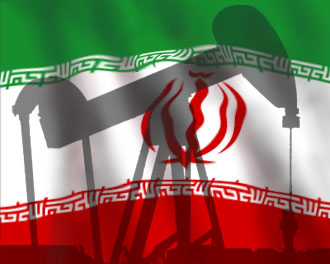Iran discovers shale oil reserves

By Aynur Karimova
Energy-rich Iran, which is the fourth country in the world for its proven oil reserves of 158 billion barrels, has discovered shale oil reserves in the Lorestan Province.
This was announced by the Director of Center for Exploration and Production at the country's Oil Ministry, Mohammad Reza Kamali on April 25.
The project of studying the shale reserves is completed by 47 percent, he said, adding that the studies, conducted in cooperation with German RWTH Aachen University prove the existence of significant reserves of shale oil in Lorestan Province.
However, Kamali did not disclose whether Iran plans to extract shale oil or not, only pointing to huge potential for producing unconventional oil in Iran.
Earlier, Iran announced about the discovery of shale oil in southeast Kerman and northern Semnan provinces.
In July 2015, the official IRNA news agency quoted an unnamed source as saying that shale reserves have already been confirmed in Iran’s Zagros Basin and near Aligudarz in the Lorestan province.
“Preliminary explorations have found three or four oil shale horizons with signs of kerogen near Kerman and southern Semnan. The Garoo formation in Lorestan contains the biggest shale reserves yet and the Kajdomi formation in Gachsaran also holds a significant capacity,” the source said.
Experts claim that the country’s abundance in conventional resources gives ground to expect that shale exploration in Iran will not go beyond exploration and identification, with no plans for production. This is supported by the fact that each barrel of conventional crude oil in the Persian Gulf costs Iran about $5-$10, compared to $40-80 for the shale oil.
The oil production of Iran, once the second-largest producer in OPEC after Saudi Arabia, reduced to 2.8 million barrels a day from 3.6 million barrels in 2011, following the EU and the U.S. sanctions.
Oil shale, also known as kerogen shale, is an organic-rich fine-grained sedimentary rock containing kerogen from which liquid hydrocarbons called shale oil can be produced.
Unlike natural gas and crude produced from shale deposits using hydraulic fracturing, shale oil is produced from oil shale rock fragments by pyrolysis, hydrogenation, or thermal dissolution. These processes convert the organic matter within the rock (kerogen) into synthetic oil and gas.
The resulting oil can be used immediately as a fuel or upgraded to meet refinery feedstock specifications by adding hydrogen and removing impurities such as sulfur and nitrogen. The refined products can be used for the same purposes as those derived from crude oil.
Gas hydrates
Kamali went on to add that the studies for extraction of gas hydrates from Gulf of Oman are underway.
The first phase of studies of the gas hydrates in the depth of 2,000 meters of Gulf of Oman has been completed and the second phase of explorations would start soon.
Iran has not yet discovered any field in the Gulf of Oman. However, the country has drilled two wells for the exploration of gas hydrates there.
Gas hydrate has a very high concentration of methane. A cubic meter block of methane hydrate can release an energy equals to about 160 cubic meters of gaseous methane.
The Iranian Oil Ministry hopes to find huge deposits of gas hydrate in the Gulf of Oman. Iran's conventional oil and gas reserves stand at 138 billion barrels and 34 trillion cubic meters.
--
Aynur Karimova is AzerNews’ staff journalist, follow her on Twitter @Aynur_Karimova
Follow us on Twitter @AzerNewsAz
